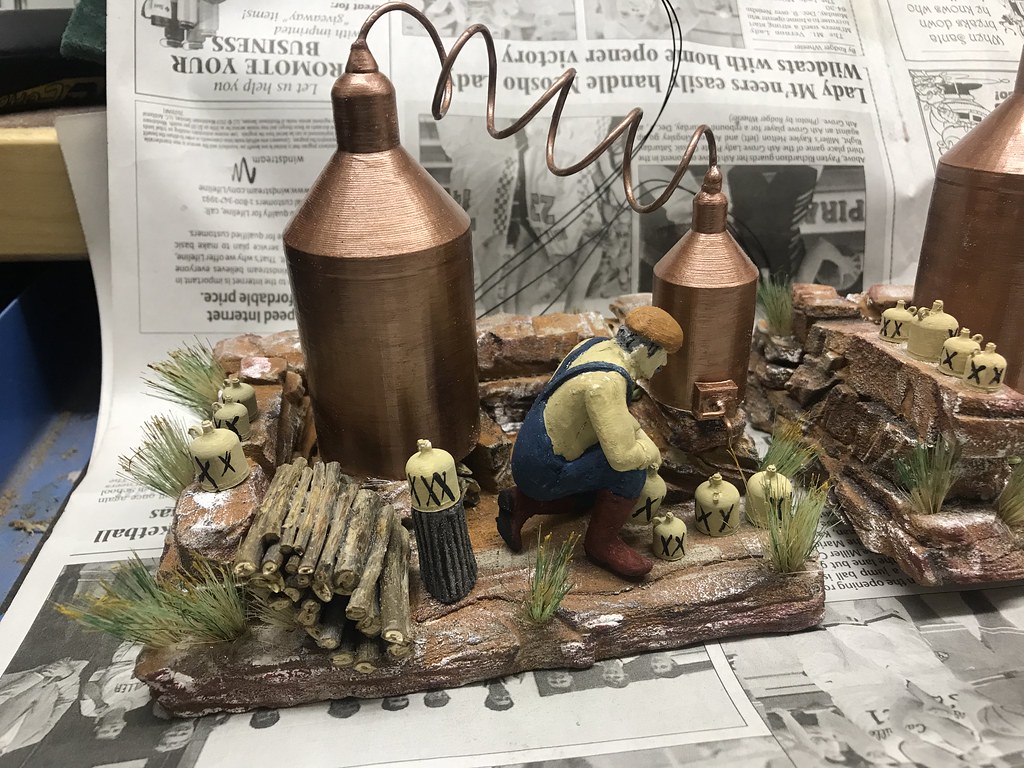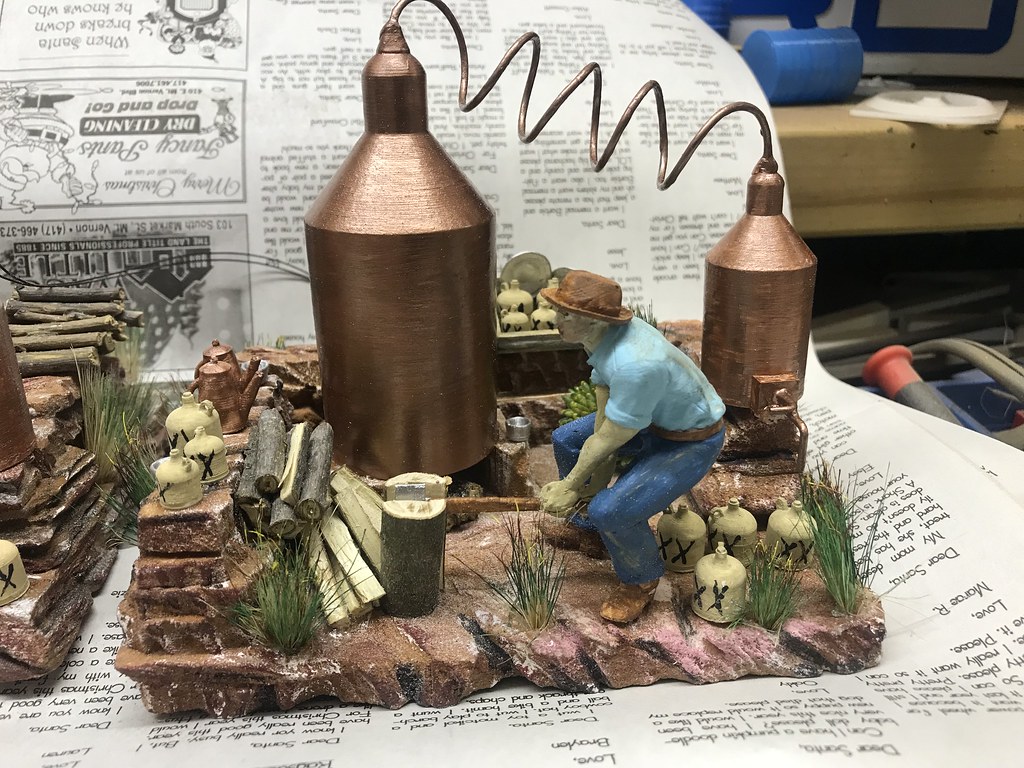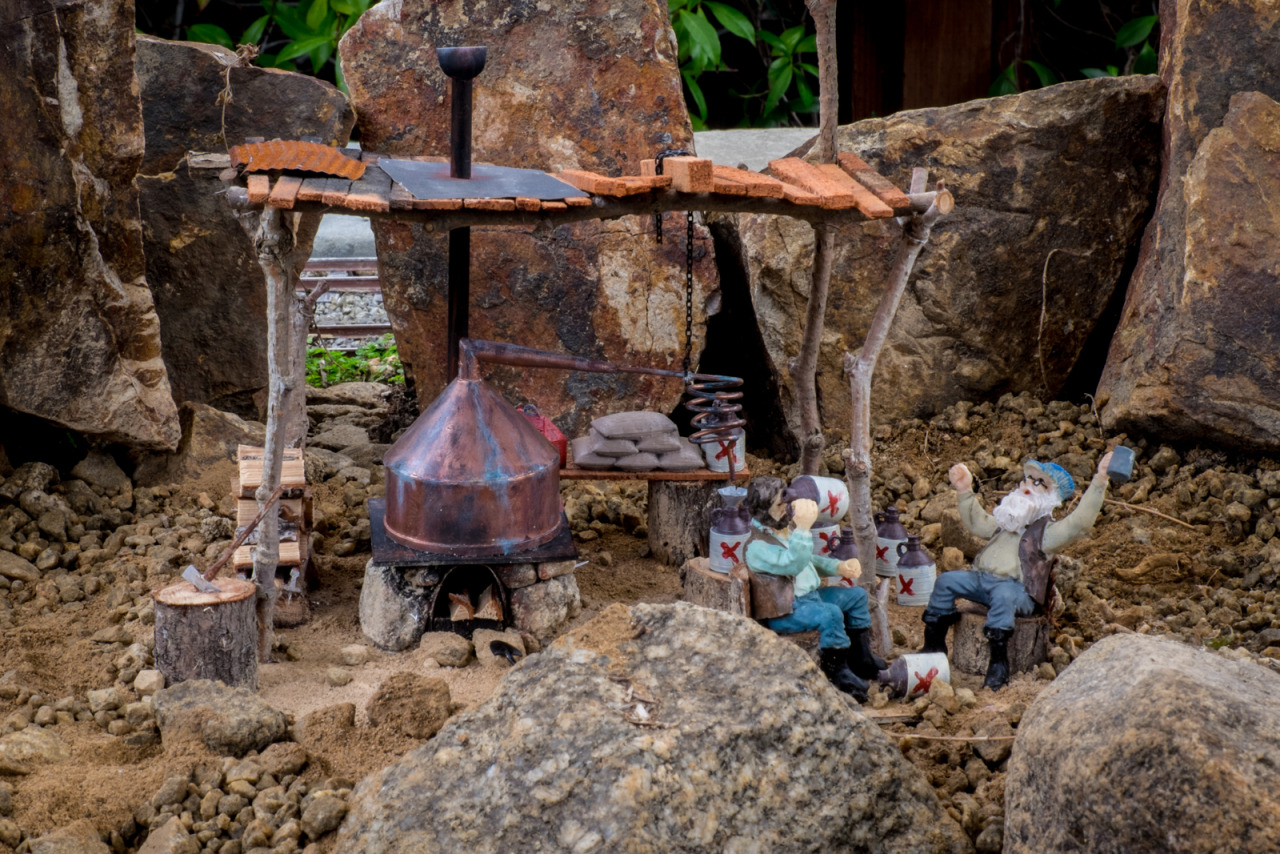My friend and myself took our D&R Railroad trailer to the Nashville Convention, I took 2 small 6" wide and 5" deep diorama moonshine stills. Sold them and got orders for three more.
Got these three made and I will share pictures and some of the details in these dioramas.
The bases are built from Precision Board sign product. I cut and carved the three sided walls to make it look like an Appalachian mountain moonshine dug out.
I 3D Draw everything I print, So I printed the 2 tanks, The moonshine jugs, coffee pots, drinking cups, and the figure.
I used paint brush bristles for the grass/weeds. These little dioramas are quite tough, if they get exposed to some rain and some sun they will survive.
 IMG_7017[1] by Dennis Rayon, on Flickr
IMG_7017[1] by Dennis Rayon, on Flickr
 IMG_7022[1] by Dennis Rayon, on Flickr
IMG_7022[1] by Dennis Rayon, on Flickr
 IMG_7018[1] by Dennis Rayon, on Flickr
IMG_7018[1] by Dennis Rayon, on Flickr
 IMG_7019[1] by Dennis Rayon, on Flickr
IMG_7019[1] by Dennis Rayon, on Flickr
 IMG_7021[1] by Dennis Rayon, on Flickr
IMG_7021[1] by Dennis Rayon, on Flickr
Look for Dog behind the man
 IMG_7023[1] by Dennis Rayon, on Flickr
IMG_7023[1] by Dennis Rayon, on Flickr
 IMG_7020[1] by Dennis Rayon, on Flickr
IMG_7020[1] by Dennis Rayon, on Flickr


